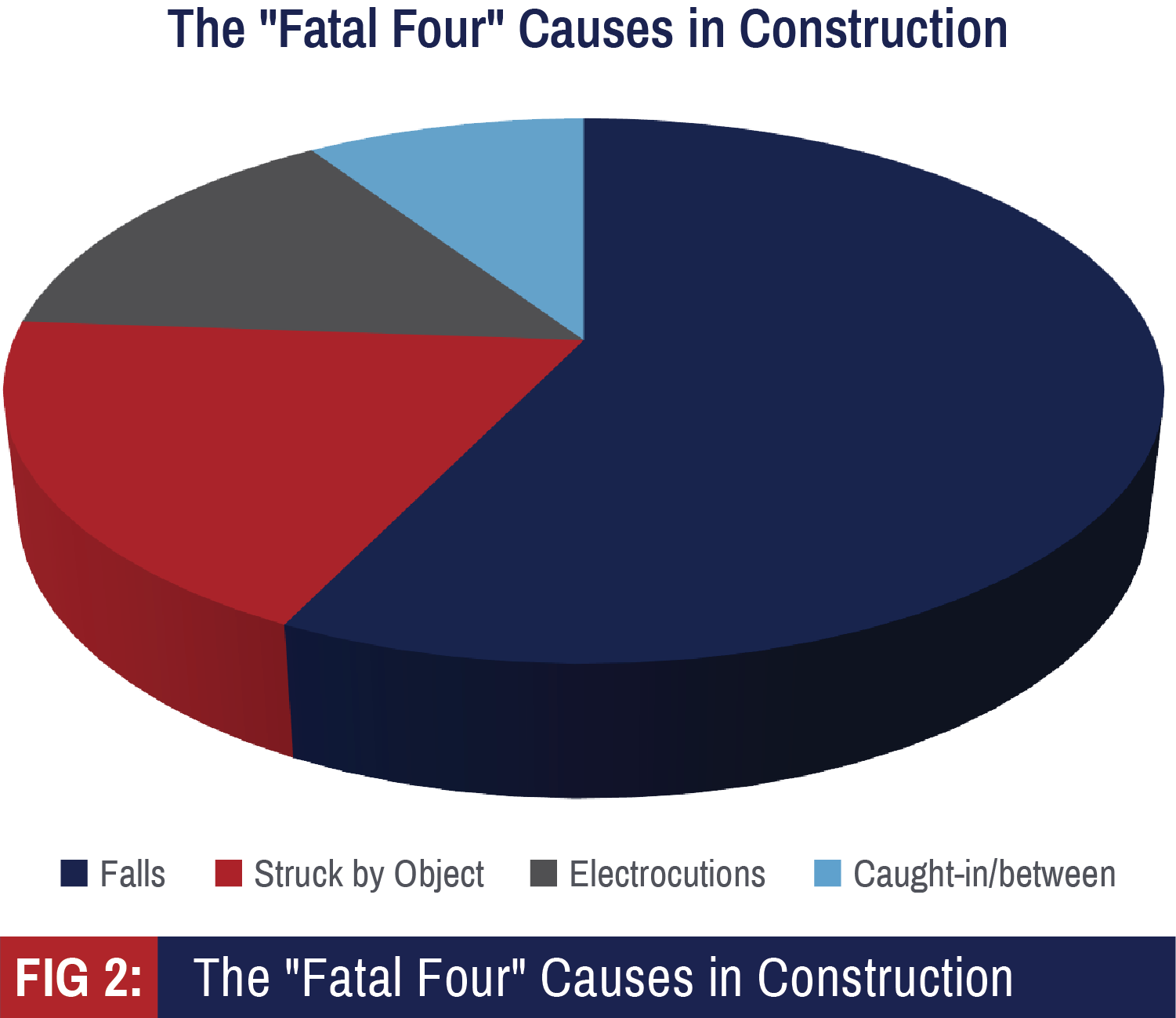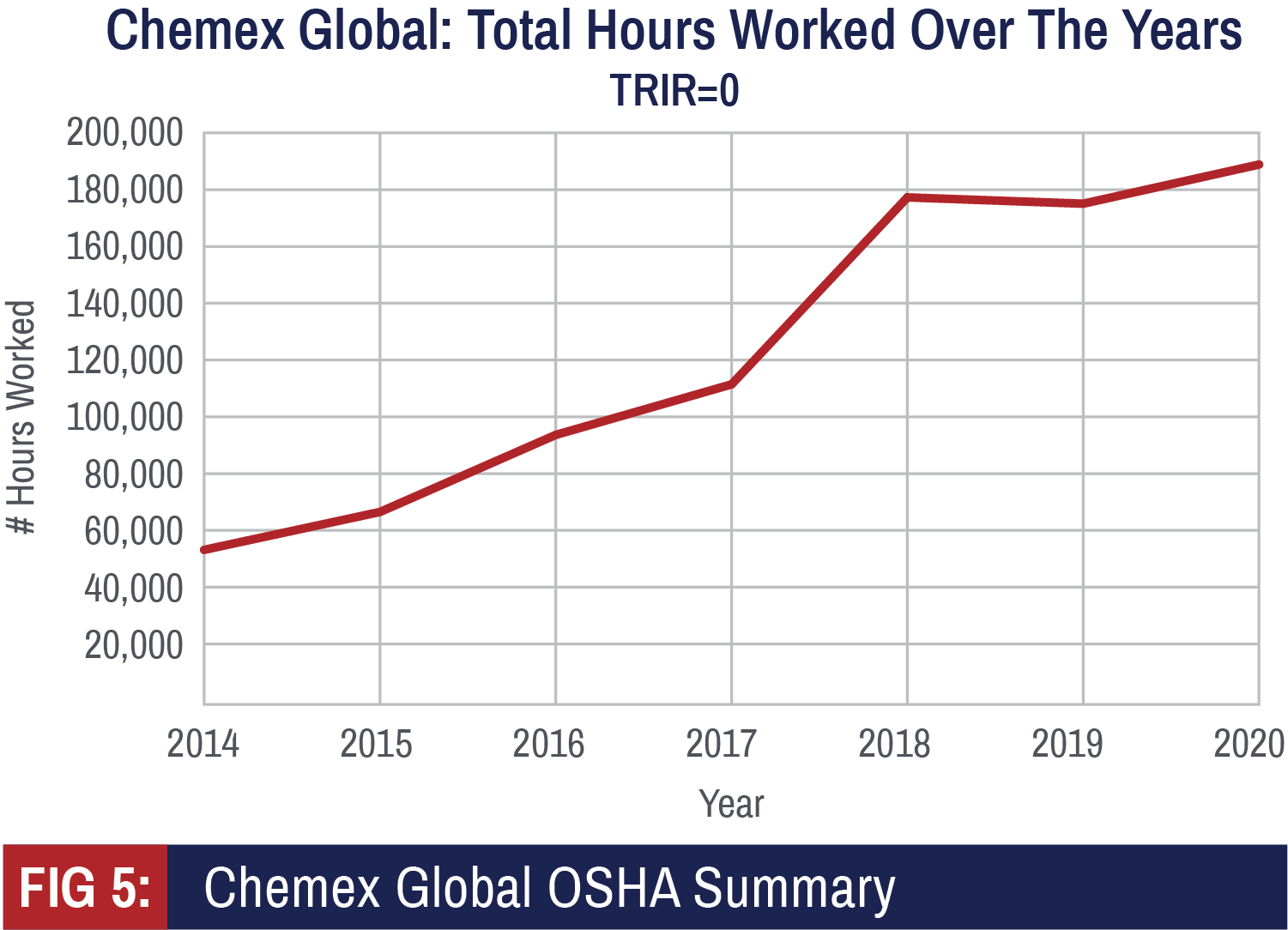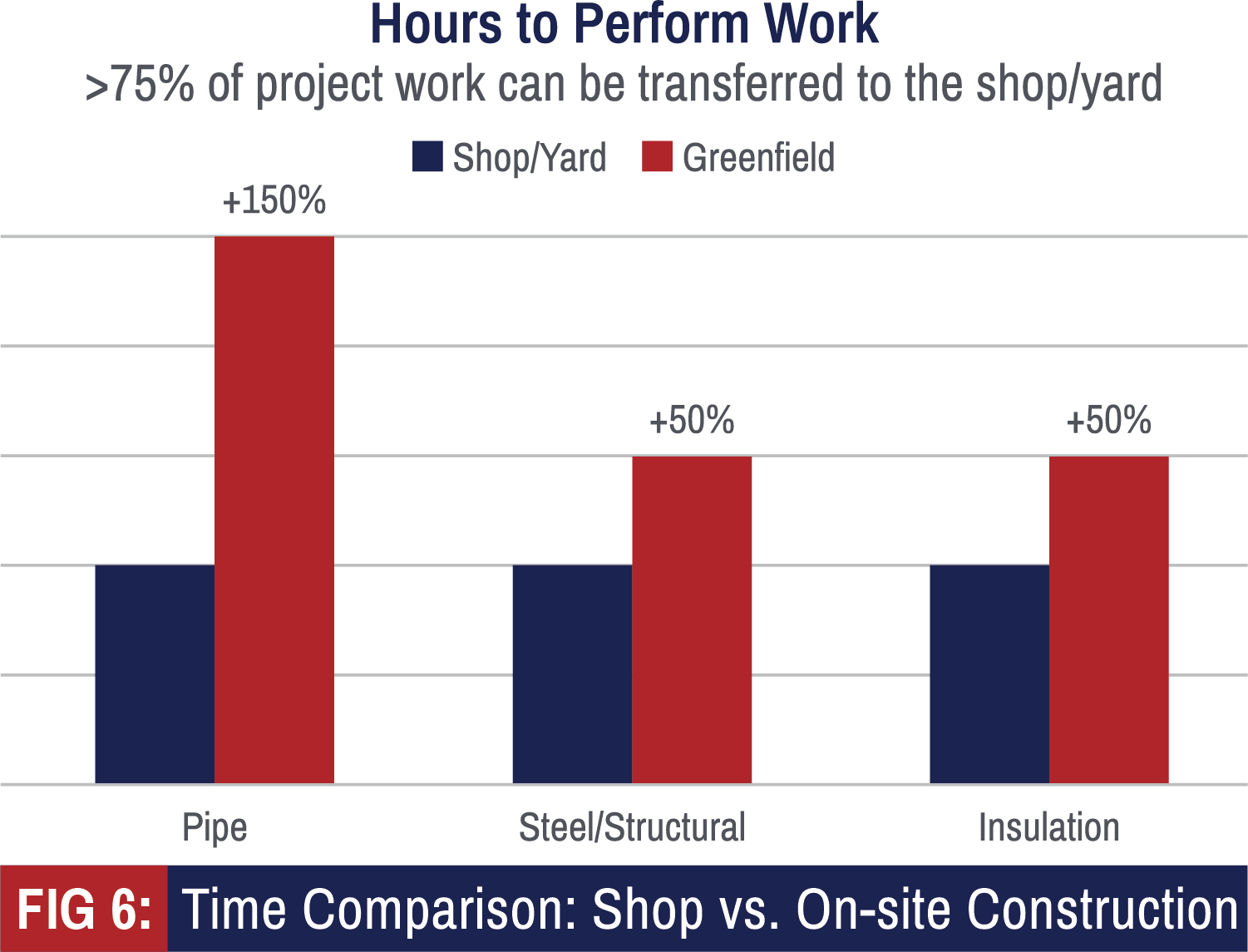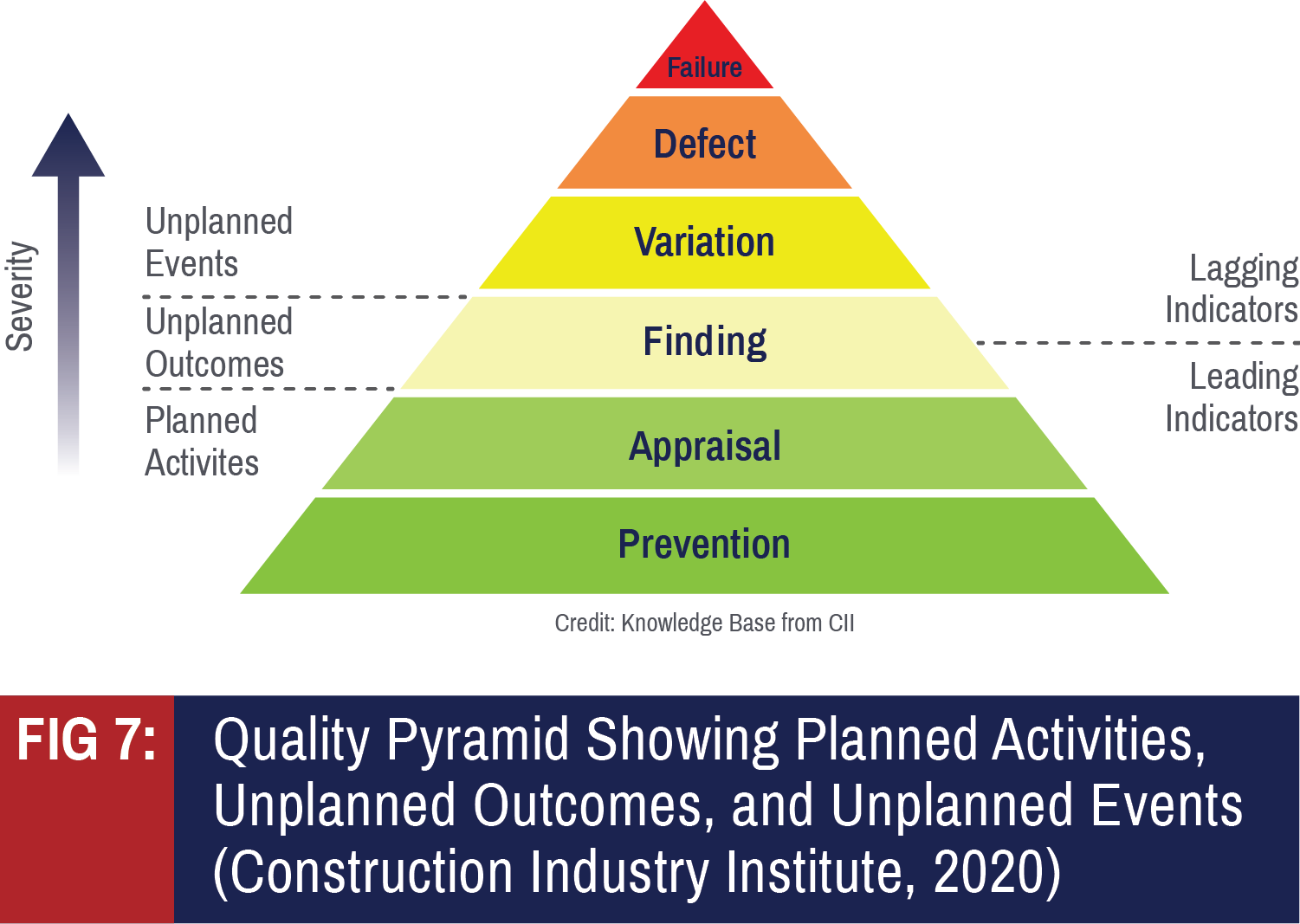Safety & Quality | The Overlooked Advantage of Modular Construction
Modular Construction – A way of building more quickly using multiple modules or skids, which are constructed in a controlled environment and set and connected on-site.
Modular construction is a well-established method in many industries; however, certain applications and benefits are not always fully understood in the Refining and Petrochemical industry. Modular refinery construction offers equivalent standards and significantly greater freedom and flexibility to a project over conventional, stick-built construction. Commonly discussed benefits of modular construction include decreased equipment capital expenditures and labor costs, and streamlined project timelines. Safety and quality are two less frequently examined benefit areas that warrant a closer look.
The six key benefits of modular vs. stick-built construction are summarized in Figure 1.

2.0. Introduction to Safety Focus
Safety is a top priority in the construction industry and with good reason. According to the U.S. Bureau of Labor Statistics, there were 5,250 work-related fatal injuries in the private industry sector in 2018. Of those, 1,008 or 19.2% were in construction (BLS, 2019). These statistics indicate that nearly one in five private industry sector worker deaths occur in the construction industry.
The Occupational Safety & Health Administration (OSHA) has termed the leading causes of workplace deaths in the private construction industry sector, the “Fatal Four.” They include: Falls, Struck by an Object, Electrocutions, and Caught-in or Caught-between incidents. When combined, these types of accidents were responsible for more than half (58.6%) or 591 construction worker deaths in 2018 (OSHA, 2020), as shown in Figure 2.

By integrating more modular components into construction projects, the Refining and Petrochemical industry could lower the occurrence of injuries and fatalities. Modular construction transfers a significant amount of the work away from the traditional construction site to a safer environment where hazards can be more effectively controlled.
2.1. Controlled Environment
Another key aspect of modularized construction is greater control of climate and weather variables. A traditional construction site is an ever-changing environment and mitigating hazards is an ever-moving target. In a shop setting, where modular components are typically built, there are many opportunities to implement hazard controls.
A permanent workshop facility garners benefits that range from additional training time for full-time employees to greater management of construction safety variables. On a traditional construction site, PPE is heavily relied upon to protect employees. In a shop environment the use of PPE is still critical, but there are other hazard control methods such as hazard elimination or substitution that can be employed. For example, in a shop, a welder can use different welding procedures or fume extractors to eliminate or mitigate the hazard when welding on exotic metals; this advantage is not often possible on a construction site.
Another major benefit of modularized construction is that worker safety and project schedules are far less likely to be impacted by weather. When workers are outdoors, every weather event puts them “at-risk.”. Year-round construction can see extreme heat or cold, wind, rain, snow, and ice – all factors that increase risk and delay work. Faced with wet or icy conditions, workers are challenged by slippery conditions on ladders, scaffolding and lifts, and while accessing vehicles and equipment. In extreme heat or cold, workers require close monitoring for exposure-related illnesses and extra break time. Building in a controlled setting keeps workspace conditions predictable and schedules on track.
2.2. Skilled Labor
A well-known fact in the construction industry is that Short Service Employees (SSEs) suffer the highest rates of fatalities and severe injuries. Over the course of a decade, approximately two-thirds (2/3) of fatalities occurred within the first year of service, and about one-third (1/3) of fatalities occurred within the first three months of a new assignment. These statistics drive an effort in the construction industry to develop a long-term, skilled workforce. This approach is complicated by the temporary and often remote locations of construction projects.
Building modularized equipment for a project transfers the bulk of the work from the project site to a controlled facility. A permanent shop operation runs with an established team that is experienced and specialized. After modular components are shipped from the module yard, a highly trained construction and commissioning team can accompany the equipment to oversee all aspects of installation through to startup.
Modular construction also minimizes the variability of finding skilled labor based on a project’s location. Results from the Q3 2020 U.S. Chamber of Commerce Commercial Construction Index indicate that finding enough skilled workers remains a perennial problem in the industry. The survey revealed that most contractors (83%) continue to report moderate to high levels of difficulty finding skilled workers and more than one in three (36%) of those contractors also reported turning down work due to skilled labor shortages (USCC, 2020). An interesting accompanying data point from the U.S. Bureau of Labor Statistics is that the number of job openings in the construction industry over the last decade continues to increase year over year, further validating the labor shortage faced by this industry (BLS, 2019).

A contributing factor leading to labor shortage within this industry is the negative perception of construction careers by young workers. Some of the reasons that detract workers from the sector are specifically tied to the project site, such as: always changing work locations, outdoor weather extremes, and sporadic work. In a modular construction operation, many of these factors are non-existent, resulting in an operation that easily attracts and retains skilled talent thereby contributing to project safety and quality.
2.3. Vertical Structures & Fall Prevention
Falls are the number one cause of construction fatalities and account for one-third (1/3) of all on-the-job deaths in the United States. Maximizing the work done at ground level has a big impact on worker safety (OSHA, 2020). A modular construction approach for tall vertical structures means structures can be built horizontally in a controlled shop environment. By eliminating or reducing the use of ladders and scaffolding for these types of builds, the contractor automatically lowers the risk of falls in the workplace.

2.4. Safety Metrics
A key safety metric is the Total Recordable Incident Rate (TRIR), which is the industry standard used to gauge a company’s safety performance.
TRIR is calculated by using the number of recordable incidents per 100 full-time workers during a one-year period. The industry standard TRIR for oil and gas pipeline related structures construction is 0.7 which equates to 1 OSHA recordable injury for every 285,000 hours worked. This number is even higher for heavy and civil engineering construction.
Shifting the work to a controlled environment reduces this statistic. For example, at Chemex Global, the fabrication team surpassed over 1,000,000 hours worked without an OSHA recordable injury in 2020. Figure 5 shows the increase in hours worked year over year in the modular fabrication shop without a recordable incident.

Additionally, the modular equipment construction process is often quicker than traditional, on-site construction. This means workers often require less time to complete specific tasks. The figure below shows the incremental time per discipline it takes to complete a task on-site versus a controlled environment. For each one of the disciplines identified, greater than 75% of the work can be shifted from the construction site to the modular staging yard. In other words, modular construction allows you to transfer many key tasks to a safer setting that expedites completion.
2.5. Continuous Improvement
Possibly the most important safety benefit in modular construction is that working in a controlled environment fosters continuous improvement. Repeated processes and procedures create workflows that make it simpler to analyze and identify potential hazards as well as opportunities to improve methods and schedules.
In a modular construction operation, workers are proficient and specialized in the areas worked and understand the areas of caution. Skilled workers create assembly-line-like work processes that reduce the likelihood of being struck by machinery, equipment, or other objects when compared to traditional construction sites. A permanent operation with long term employees also benefits from a deep-rooted safety culture that starts from a worker’s first day on the job and builds continuously over the long term versus temporary, project-specific safety training.

3.0 Introduction to Quality Focus
Safety is just one half of the Safety & Quality benefit discussion. In a design-build operation, a focus on quality can also be embedded in all phases of a modular construction project from engineering and design to fabrication and turnover.
3.1. Total Quality Management
In a modular construction environment, an integrated approach can easily be used to improve the quality of deliverables. Total Quality Management (TQM) is a simple concept that involves training staff in all areas of quality inspection. A typical modular structure in the Refining and Petrochemical industry has the following construction disciplines: structural steel, piping, mechanical, instrumentation and electrical, and coatings. A controlled environment allows for real-time inspection of all these disciplines. Inspectors trained in the TQM approach can resolve issues before the equipment is shipped to the worksite.
With traditional stick-built construction, numerous dynamics influence the effectiveness of a quality management program. Many of the TQM system barriers are the same factors that impact safety. But there are other considerations as well. On-site construction projects differ greatly – locations vary, as does work volume and intensity; the labor force is temporary (SSEs, key supervisors, quality personnel); projects are subject to delay; and the supply chain is extensive.
With modular construction, a permanent and structured operation results in fewer challenges and therefore, a more effective quality management program.
3.2. Internal Quality Auditing
The Construction Industry Institute (CII) research (publication 10-2) estimated annual losses due to rework in industrial construction at $15 billion. CII further estimated rework could be as much as 12% of the total project cost. Installing work incorrectly is an ongoing challenge and clearly points to a lack of training for those doing the work but also for those inspecting the work. Quality Assurance (QA) is the last line of defense for construction projects and these re-work numbers illustrate the challenges of traditional construction methods.
A robust QA program helps to eliminate rework and brings effective solutions and continuous improvement. When work is primarily shifted to a shopsetting, the fabrication and construction processes (and teams) become standardized and present the opportunity to perform internal quality audits. A modular construction company can employ a formal Quality Audit Plan that includes an audit schedule, corrective and preventative actions, findings and issue resolutions, and audit reports. In practice, management reviews audit findings and assesses overall effectiveness for the Quality Program.
This ensures quality is being effectively implemented and that the services being performed match, or exceed, the project quality requirements. The figure below illustrates how quality issues can be classified and identified (Construction Industry Institute, 2020).

Typically, quality audits are performed at approximately 30%, 60%, and 90% of a project’s completion status when duration is a year or longer and appropriate in size and shape. With a formal Quality Program, all audits can be system recorded and reviewed with project managers. Appropriate personnel can be notified when findings or observations are logged. This can ensure responsibility is assigned for determining, documenting, and implementing appropriate and corrective actions. Follow-up reviews can also be conducted to verify and record the effectiveness of any corrective actions. Any continuing deficiencies or non-compliances can then be brought to the attention of the project manager for immediate remedy.
3.3. Factory Accepted Testing (FAT)
Factory Accepted Testing is a process that involves the testing of equipment and its capabilities at the fabricator’s facility to verify it is operating in accordance with design specifications. FAT’s are typically performed on complex equipment, equipment with novel technology, and on equipment that will experience either extensive transportation or complicated installation (i.e., at a grassroot site) (Walter, 2015).
Modular construction is largely performed inside a facility meaning that all fabrication can be subject to extensive FAT; this type of testing protocol is not possible with stick-built projects. FATs provide a primary advantage so that fabricators and vendors can prevent failed equipment returns at the project site, especially helpful when projects are located overseas. Testing equipment in a controlled factory setting offers the following benefits to a project before shipping (Walther, 2015):
- Ability to identify incomplete or incorrectly installed components
- Better accessibility to testing materials
- Full access to required utilities
- Validation of equipment sizes/specs
- Highly trained staff that can support testing trials
- Controlled environment that does not impact test results
4.0 Conclusion
In summary, for refinery construction, modularization integration saves costs and brings significant safety and quality advantages to projects when compared to stick-built construction.
When safety is considered, there are key advantages in working in a controlled shop environment versus a changing field site. In the shop, key fabrication activities typically take place under a roof in a regulated climate.. Modular construction creates the opportunity for all equipment to be fabricated and transported horizontally, reducing the need to work from significant heights. Naturally, safety is also improved through a permanent workforce, who statistically are more skilled and subject to consistent training and continuous improvement programs over a long period of time, unlike the nature of a project construction site. All these safety attributes work in tandem to help prevent serious or fatal incidents within the hazardous construction industry.
A modular approach creates more opportunities to leverage quality programs. A shop setting with more repetitive activities allows the implementation of an internal quality auditing system. This type of system follows a consistent schedule, reporting process, and report log to create a catalog of suggested behaviors and actions. Simultaneously, this system encourages self-scrutiny and regular assessments to measure its effectiveness. To the same effect, a shop permits refinery construction to be subject to FAT, a key opportunity to mitigate more risk away from what is intended to be one-time project site activities.
While cost and time savings will always be prevalent in the modular construction debate in the Refining and Petrochemical Industry, there is reason for an even deeper and stronger discussion to be had when layering in the Safety and Quality benefits.
Jignesh Fifadara1, Brad Moseley2, Joseph DeSpain3 1Vice President of Business Development; Chemex Global Inc., 2 HSE Director; Chemex Global Inc., 3 Sales Engineer; Chemex Global Inc.
Article References
- “National Census of Fatal Occupational Injuries in 2018.” Bureau of Labor Statistics (BLS), U.S. Department of Labor, 17 Dec. 2019, www.bls.gov/news.release/pdf/cfoi.pdf
- “Commonly Used Statistics.” Occupational Safety & Health Administration, U.S. Department of Labor, 2020, www.osha.gov/data/commonstats
- Walther, Ingrid. “Factory Acceptance Testing; SAT – Site Acceptance Testing.” Pharma Consulting Walther, May 2015, www.dcvmn.org/IMG/pdf/12_fat_sat.pdf
- “Commercial Construction Index: Q3 2020.” U.S. Chamber of Commerce (USCC), 2020, www.uschamber.com/sites/default/files/2020_cci_q3.final_.pdf.
- “Creating Standards for Industry-Wide Quality Metrics.” Construction Industry Institute (CII), 2020, www.construction-institute.org/resources/knowledgebase/kwowledge-areas/quality-management/topics/rt-313
- “The Field Rework Index: Early Warning for Field Rework and Cost Growth.” Construction Industry Institute (CII), 2001, https://www.construction-institute.org/resources/knowledgebase/knowledge-areas/quality-management/topics/rt-153/pubs/rs153-1